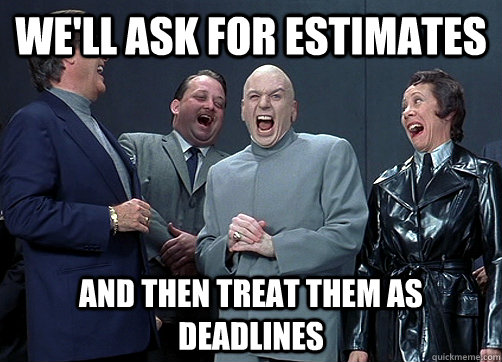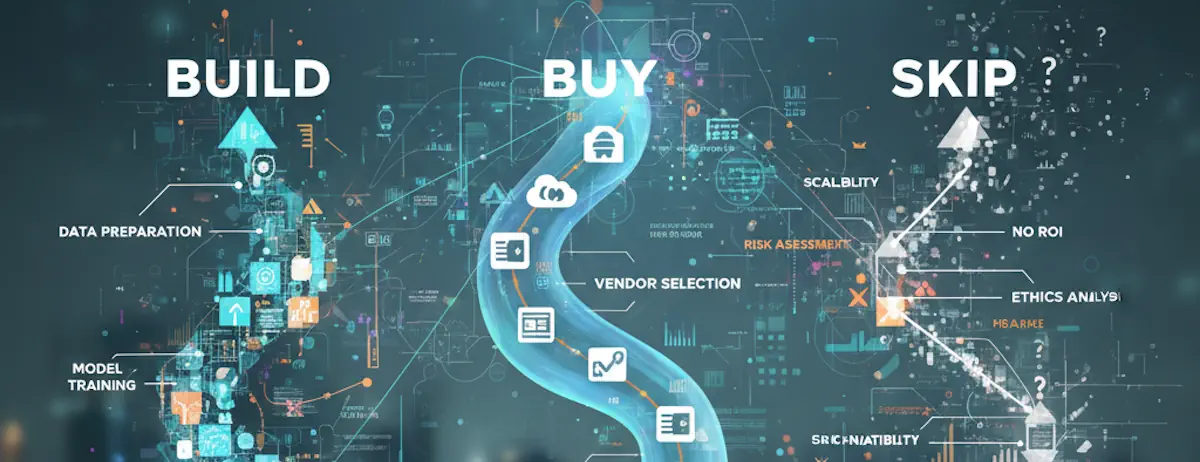
As we run screaming into the new year, it’s the time of year that most companies are double-checking their roadmaps: comparing it to last year’s Q4 data, seeing what worked and what didn’t, and adjusting course accordingly (see my article about pivots vs. features).
Here’s a few suggestions for your roadmap.
Let your product roadmap guide your technology roadmap
I’ve seen (and been guilty of) this one–finding a great new technology … and trying to figure out how we can work it into the product. Unfortunately, there’s always something new and exciting out there and if it doesn’t apply directly to your product’s goal, it’s usually noise.
Before using your mainstream product as a test-bed, consider the ROI.
- Will this improve some process within the development lifecycle of the product?
- make it easier to maintain, support, rollout, etc.
- Will this enhance our market advantage?
- does this feature enable us to gain a competitive advantage over the “other guy”?
- Can we recover the costs (because features cost time and money) within {x} amount of time?
If those questions tend to be ’no’, reconsider.
caveat: R&D is always a caveat. If your organization’s goal for innovation is to be a leader in a specific technology. If you want to be the name brand on a bleeding edge platform or market, then the market advantage (see above) balances out. Companies should always be innovating–just be sure you’re innovating on the right thing.
Understand, clarify, and communicate your product roadmap to everyone
I mean everyone. From junior to senior staff, everyone should be onboard with your roadmap and vision. Having all levels engaged with the roadmap helps everyone understand the role they play in the success of the organization.
Include all levels when creating the roadmap
Too often I see executive teams (or even a subset of that) be the sole creators of the company roadmap. In my opinion, that creates an enormous vacuum for ideas–especially if the product’s target audience isn’t represented in that cohort.
Include a sampling (or depending on the side of your company, everyone) in open forum style collaborative meetings.
Does that take time? You bet! It also provides your organization with some great advantages.
- Most organizations are made up of all age groups, backgrounds, and expertise.
- Some of your staff are CONSUMERS of your product–be sure they’re there to help refine user personas.
- While not all ideas have to be considered (building a product by a 50 person consensus would be exhausting), when an team member’s idea makes it to the final roadmap, the sense of pride and ownership will help propel that forward. Build that sense of product ownership at all levels of the organization.
Give yourself room to breathe!
Your roadmap doesn’t need to account for every second of every day.
I repeat–you don’t have to schedule everything and shouldn’t schedule without buffer.
Think of it like your day-to-day calendar. What happens when you constantly schedule meetings back to back? You’re constantly late. Scheduling back-to-back doesn’t account for side conversations, travel time, and run overs. The same thing applies to roadmaps.
The roadmap is the map helping you gauge where you are now and where you want to go in a period of time.
Don’t be afraid to change.
Things change. What sounds great today may be a horrible idea in 6 months. This is especially true in technology. Don’t get trapped into thinking you HAVE to do what you’re specified if you have better data. Change your roadmaps priorities, focus, and destination (if necessary).









